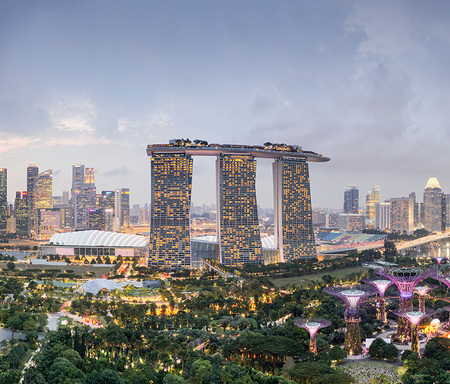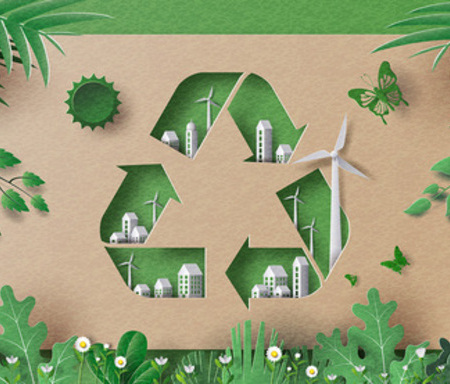
Hong Kong’s journey to net zero
We have been hearing a lot more about environmental, social and governance (ESG) in the real estate industry over the last few years but the concepts which lie behind it have been germinating for decades.
We have been hearing a lot more about environmental, social and governance (ESG) in the real estate industry over the last few years but the concepts which lie behind it have been germinating for decades. The origins of ESG lie in the rise of socially responsible investing in the 1980s, followed in the 1990s by sustainable funds indices, the UN Framework Convention on Climate Change, the Kyoto Protocol, and the Global Reporting Initiative of 1997. The term itself was first coined in 2005 in another UN commissioned report from law firm Freshfields Bruckhaus Deringer and what followed was a plethora of frameworks and rating agencies including the Task Force on Climate-related Financial Disclosures (TCFD) and the UNs Sustainable Development Goals in 2015.
According to the United Nations Environment Programme, building operations accounted for about 31% of global final energy consumption and 28% of energy related CO2 emissions in 2020. A growing appreciation of the important role which real estate can play in mitigating climate change has prompted developers, asset managers, investors, and end-users to take ESG much more seriously across the entire lifecycle of a property. In our experience, in the region’s real estate markets, Australia, Hong Kong, Japan, New Zealand and Singapore are the front runners in the area of sustainability with China and Vietnam making swift progress. As an example, the Hong Kong government is aiming to reduce electricity consumption from commercial buildings by 30% to 40% from 2015 levels by 2050. Broadly though, Asia-Pacific currently lags Europe and the US in its drive to transform the industry with issues such as inertia, capital cost, insufficient policy impetus and inadequate access to green energy and construction materials among the factors hindering the wider adoption of ESG standards.
The importance of Asia Pacific’s real estate markets to sustainability is underlined by the fact that the region now accounts for 20 out of the world’s 36 megacities with populations of over ten million. The region’s urban population is set to grow further from 2.3 billion in 2019 to nearly 3.5 billion by 2050, a 52% increase. Rising urban populations usually stimulate a boom in all types of real estate assets and according to the International Energy Agency, Asia-Pacific will see the greatest rise in stock across all property sectors globally, with a 65% increase by 2050 led by ASEAN, China and India. While the spike in supply implies a steep rise in embedded and operational carbon, on the plus side the region also has huge potential to promote sustainability and develop new technologies to combat climate change. The mission is to ensure that Asia is able to decarbonise on time while also significantly expanding its urban footprint.
Here in Hong Kong, industry participants are largely still at the beginning of their ESG journey, and yet to set out their net-zero pathways and get to grips with the Science Based Target initiative (SBTi). Quite reasonably, many are daunted by the prospect of a new regulatory burden and additional costs. The challenge is often to understand what is a guideline and what is mandated, avoid the pitfalls of green washing and choose between a bewildering array of certifications and standards. The reality though is that it is too late to do nothing. Aside from growing public concern and government regulation, there is also a sound financial justification for investors to improve the sustainability credentials of their portfolios including risk management, transparency, cost savings and increased revenues. According to a recent ULI/PwC survey, 37% of respondents cited ESG factors as a mandatory consideration in real estate investment decisions, a notable increase from the 22% recorded two years earlier.
In commercial real estate markets where transparent measurement criteria are often scarce, green building certification is one of the more structured indicators. While LEED is arguably the most widely adopted building standard in the region, many jurisdictions have developed their own to take into account local market characteristics (water issues may be at the forefront in areas prone to drought for example). Taking all green certifications into account, local and international, Singapore stands out with 95% of the city state’s Grade A stock certified followed by 64% in Kuala Lumpur and 47% in Hong Kong. Meeting these standards has important implications for landlords, demonstrating good corporate governance, and increasing the appeal of office portfolios to tenants whose own ESG commitments mean that they are not able to occupy non-compliant buildings. For landlords prepared to embrace social standards, there is also an opportunity to improve relationships with tenants and the wider community while also addressing issues such as health and well-being. One example may be finding ways to prioritise local neighbourhood businesses or social enterprises in tenant selection.
Translating the call to action into concrete action includes a large number of relatively small steps; the payback period from switching fluorescent tubes to LED, for example, can be as short as 18 months. While the impact on overall energy consumption of individual actions may be relatively minor, small actions when taken and scaled up across the city can have a significant impact. My own experience is that leadership, ambitious goals and a collaborative approach with internal and external stakeholders can yield meaningful results which can be shared internally across global operations and externally with clients. There are signposts on the pathway.
But if we look at ESG with a slightly colder eye, it also emerges as an important differentiator in competitive office markets such as Hong Kong where a substantial supply pipeline at a time when corporates are consolidating means that landlords need to work harder to improve tenant satisfaction. While data is difficult to come by and hard to analyse, we see a rental premium between green stock and uncertified buildings of between 8% and 10% under equilibrium market conditions. In a falling market, that means green certification delivers welcome insulation from steeper rental falls while older, non-compliant stock can expect to face much higher vacancy levels. The challenges in our local market are evident as just over 50% of Grade A stock lacks green certification and will require retrofitting or redevelopment over the next few years. For landlords, developers and asset managers, this is a call to action which cannot be ignored if Hong Kong’s office market is to maintain its competitive edge in the region, while playing a vital role in ensuring that the city meets its own net-zero goals.
Further reading:
Asia Pacific ESG report
Contact Us:
Simon Smith



